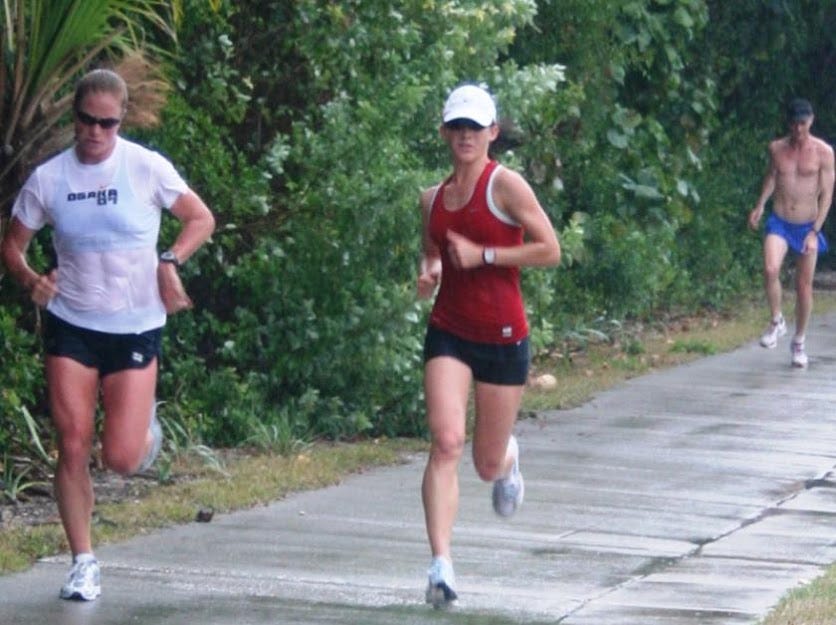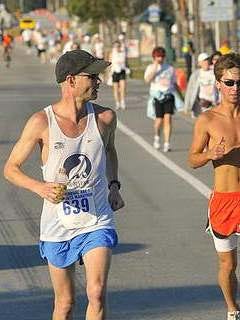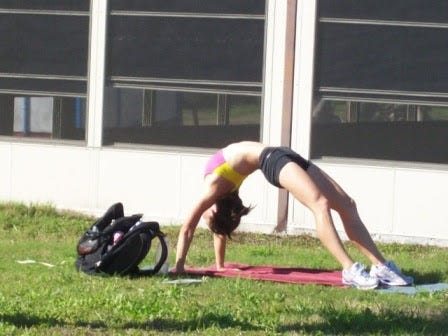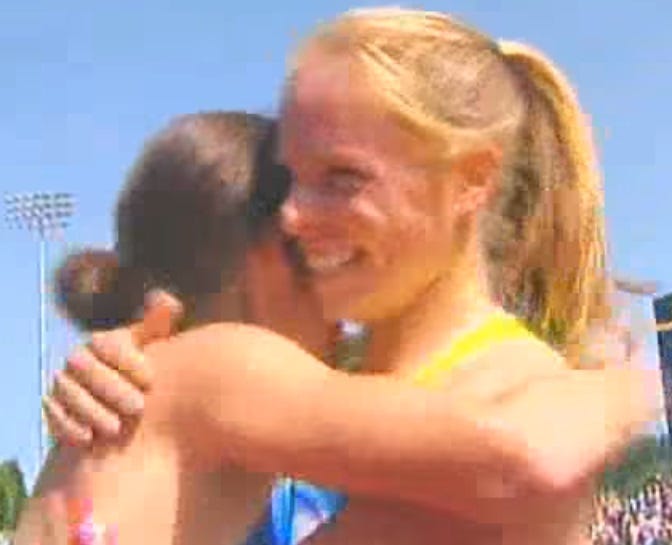A belated goodbye to revelatory magazine articles about elite runners
We* can't clamor for athletes' "stories" if we* insist on smelling and scoring all of their farts in real time
Searching for any of the articles I had published in running-centric outlets between 1999 and last fall usually means scanning a list of titles to find the one I want, starting here on the left-hand side of the page. This can quickly lead to hours of distraction from whatever I’m working on, because I find myself flooded with memories specific to a given, long-unremembered story and whatever led to me seeking it out, happening across it by chance or both.
This doesn’t really apply so much to the training-related pieces I consider my primary contribution to the revered canon of distance-running-related literature; fifteen, even twenty years ago, it was almost as easy to write process- and numbers-driven articles that are essentially short student papers as it is today, with the hardest part having to do offline research (horrors!) and dig around a little harder for e-mail addresses and phone numbers. It helped that I knew a good deal about the historical, physiological and operational aspects of running off the top of my head, which a lot of my successors do not and don’t even consider important in the new, cheerful age of feelings-first, blame-based, accuracy-optional reporting.
But some of my Running Times articles, thanks to the welcoming editorial eyes and mind of editor-in-chief Jonathan Beverly, were stories were gathered entirely on the ground, often requiring me to cover that ground quickly to keep up with the narrative. Some of the most memorable: A 2001 mini-memoir about coaching the Bishop Brady High School cross-country team to its first trip to the New Hampshire Meet of Champions; a 2003 piece about affable road-whore extraordinaire Elly Rono centering on a road trip to the Crazy Eights 8K in Tennessee; and a 2008 profile of a pair of then-mostly-unknown young women, Shannon Rowbury and Erin Donohue, who traveled to Sarasota, Florida for a three-week training stint and visit with their coach, John Cook, as part of their dream to make that year’s U.S. Olympic 1,500-meter team.
The last of these, now the property of Runner’s World and split online into a main feature called “Southern Cooking” (or if your prefer, the original Running Times version) and a sidebar dubbed “Cook’s Ingredients” (same) was assured of being my favorite piece of running-related work to that point in my life before it was even complete. Thirteen years later, it still is. It doesn’t hurt that Rowbury and Donohue went one-two at the Olympic Trials to punch their ticket to Beijing, as did—in a far safer bet and in different events—Shalane Flanagan, the third Nike athlete at that time being coached, also mostly remotely, by Cook. (I wouldn’t trade my experience at Bishop Brady for anything I’ve experienced in running in over 36 years of striving, scribbling, and screaming, including the less-than-150-second reduction in my marathon time that would have gained me admission into the Olympic Trials. But as a writing assignment, it fell into my own lap, because I dropped it there. And it was a story I knew in its entirety before I decided to pitch it.)
As the June 2008 print issue of Running Times was reaching consumers at the beginning of May, about two months before the U.S. Olympic Track and Field Trials, the magazine’s Web editor had fellow senior writer Scott Douglas do a phone interview with me for what was then a state-of-the-online-art feature, RT Radio. On the output end, if not in production, this was simply a short podcast. (Why “Illustrious and Elusive”? I’ll be honest—I’m not sure someone of my stature owes the rabble a firm answer to that.) In 2008, it was normal for a story to appear in print at least a few weeks before it showed up on the magazine’s website—there was no real advertising money to speak of for such websites in those days—so these interviews were a way to get people to buy the magazine or at least remember to return to the website in a month to read the story there. I think this is called a “promotion,” or something close.
The clip is 20 minutes long and, since I had kept myself out of the print story to the extent this was feasible, Scott used the time to solicit anecdotes explore perspectives I wasn’t able to offer in the published piece. The most interesting part to me, especially given how things stand in the running media today, was Scott asking me how I believed my presence in the athletes’ and coach’s lives affected both how I told the story and how its subjects behaved.
At the time, I was 38 and, despite being healthy and putting in 100-mile weeks, fairly sure I was done with serious competitive running. (I was right!) Before I got notice in early February that Shannon and Erin were coming to town, my training was for the immediate purpose of running the Sarasota Marathon with a friend who had a shot at the masters’ win, which we thought would take about 2:50. (We ran 2:54 on a long course wound up second and third overall. The last bunch of miles of that organizational Hindenburg might be worth a boisterous belch of a post in their own right.)
I was in good enough shape to run the 3 × 600, 400, 200 session described, which I was actually in charge of pacing. This experience was characterized by a weird combination of ordinary intensity—it was the kind of session I would choose on my own when fit—and nagging fear that I would ruin the workout with poor pacing or maybe knock someone to the track, with my bet not having been on Erin being the victim).
Though not a businessperson when it comes to much of anything, I learned early in the running-writing game to use my longer articles to generate spin-off profiles and interviews whenever possible, and that happened here; I had secured interviews with Erin and Shannon for the New York Road Runners within days of their having left Florida. (Those long-discontinued NYRR pro interviews were both the easiest $150 a freelancer could earn and a great deal of fun.)
You can hear in the interview that Shannon and her mother bought fourteen copies of the article between them. I’ll admit it, I was pleased to have crafted a profile that honored the stars of the show in a way all involved were happy with without it coming across as gawking, blind promotion or a wonky technical analysis.
But this is about the media, not me getting misty-eyed over my afternoon porridge. Bits that stand out about the article(s) and the accompanying interview today:
“She’s probably your next U.S. sub-15:00 5K runner” — Rowbury would first break the barrier six years later in 2014, a year before she set the since-demolished American record. About a month after this interview was posted, Lauren Fleshman became the eighth American woman under fifteen minutes with a 14:58.48, agonizingly close to my own PR.
My being agog at the amount of time spent on dynamic flexibility. I remain convinced that Cook’s athletes, via wisdom from Dan Pfaff he kept hidden on sheets of paper in the trunk of his car, enjoyed a significant if unquantifiable performance benefit from the work they did here.
My describing walking a narrative line that included the irreverent bits of chatter without portraying Cook as oafish or the environment itself as degenerate. Now, this was in 2008. Try to imagine some of these lines not drawing fire today, keeping in mind that everyone in the story was pleased with how events were described:
“Two women of about college age -- one a lithe brunette, the other a solidly built blonde -- are performing a series of complex muscle-toning moves…”
“Despite the occasionally rough footing, a golf ball set atop Rowbury's head at this speed would likely not budge. In contrast, Donohue, who at 148 pounds would qualify as a ‘Filly’ in road races, lacks a typical distance runner's easy bounce and knee lift, yet up close there is nothing labored about her.”
“When Cook sees where Donohue is sitting, he snaps, ‘Get your fat ass off that thing before you break it!’ Donohue, probably less burdened by adipose tissue than any world-class decathlete, smiles and keeps her ass right where it is.”
“Cook chooses his demonstrative moments with care, but when he has them, they're unmistakable. ‘You see that?’ he says, eyes ablaze in the certainty of what this run has shown. ‘The other f-ing girl [i.e., Flanagan] is two minutes faster!’"
You can decide for yourself if the story would have been better without these details, which, by the standards of today’s harpies and their toadies, are not merely superfluous but overtly damaging. Or whether it suffers from maleness, Whiteness, Floridaphobia, Nikephilia, or some other cancelable solecism.

Erin, a genuine all-around athlete, was also a great javelin thrower. Her dad ran a 1:07 half-marathon at over 190 pounds. Was there enough focus on these women’s ability to self-guide? (“We are a very special group in that we have three very independent women," Flanagan says. "The universities each of us went to taught us a lot of skills in those areas. We're able keep ourselves injury-free and happy while training at a high level.") Did the presentation suffer as a result of the physical descriptions included?
That seems like a complete-enough selection.
This story stayed symbolically open until July 6, 2008, the day of the Olympic Trials 1,500-meter final in Eugene, Oregon. I won’t lie and say I wasn’t playing favorites as I watched from my living room, literally—I’m almost positive that’s true—unable to shut up or sit still. Today, I tend to almost tear up when I watch this, not at reliving the result itself unfold but at remembering how it felt at the time to have watched the consummation of so much hard, methodical, yet enjoyable work I had seen at close range. (Note the owner of a now-very-familiar long blond ponytail who qualified for the final at, pre-Mary Cain and long after Mary Decker, what seemed, and was, a precocious age.)
Now for a thought experiment: Regardless of what you think of this story—its subjects, the author, the taboos, and the overall writing—try to imagine reading a new story like it today. It would be impossible for the simple reason that the public is virtually never deprived of elite track and road runners’ comings and goings for even a few days anymore, especially those who belong to formal training and competitive groups (i.e., everyone really good except for Ben True). While Shannon and Erin themselves didn’t strike me then or later as demonstrative or interested in random publicity, it’s unlikely that a similar two-week training stint by Nike talent or anyone else nowadays would somehow slide past Instagram and Twitter, its details and even its existence unknown to most of the greater running world. This isn’t an accident, of course—it’s how these athletes are essentially forced to elevate their visibility whether they are naturally inclined to or not.
This isn’t about the fun of feeling like an insider. It’s about being able to provide something that isn’t already there, and render it as it is, not how anyone thinks it should be. Maybe people see an unrelenting farrago of clamor tempered by scattered sweet melodies the best of all possible set-up, but I didn’t mind a running world where sometimes, the only way to learn something of real interest was to hear it from the source or from someone close to the source with the ability to faithfully represent an event or series of events lasting longer than a few minutes or hours. No one else seemed to mind, either. That’s because most of today’s Wokish people were still popping their first pimples and not yet a part of the public circus.
I can’t tell you exactly when “everyone” left MySpace for Facebook or when Twitter became something more adults were using than not. But as I recall, it wasn’t long after this was published. In any case, social media—and the option these provided of essentially spying 24/7 on people who in turn were doing the equivalent of dancing naked in their bedrooms with the shades open—were not a big part of running. The online communication tools of the day were email, personal websites, running-product websites, whatever the hell Letsrun and its message-waterboard were, a few athlete and hobbyjogger blogs, and little else. Once Instagram et al. came along, the element of immediacy became paramount: Immediate takes without the need to set up any sort of publishing platform, instantly dispersible images, revelations of Who I Saw At The Track Today, and everything else that is now not just expected but demanded. No one who has ever sat transfixed by a screen has ever wanted anything about the Internet to slow down, and that includes most of all the speed at which admired figures upload new content, no matter how obviously mailed-in, vapid, or reluctant.
And while this is an especially subjective view, athletes and coaches really don’t seem to care anymore if they’re quoted by running-content creators because there are so many of these creators, and also because so many of content-creator guests either don’t stand out for any special reason or lose whatever shine they initially boast after being shuttled along through a chain four or five podcasts or interviews within a few weeks’ time. (If someone started a podcast with a host who asked their guests the sorts of questions I would, it would stand out from the herd in a hurry.)
I bring this aspect up—the reality that we* can’t have macrostories of we* insist on spoiling our appetites with microstories—because most of the more unruly running observers today are curious about athletes’ personal lives to something straddling the fuzzy boundary between star-crushes and near-lecherous obsession. Part of the reason is that “stories” are in demand, even and perhaps especially stories about obese, money-grubbing liars whose training, if it exists at all, never seems important enough to mention amid all the workout gear shown in their Instagram stories and photos. “Stories” are also easier to come up with than articles that require some knowledge of training (and maybe even the ability to run a little), a handle on the overall professional scene outside of imagery and sound bites, and a preference for focusing on building rather than tearing down.
But although changes to how the Internet is primarily used in the past dozen-plus years essentially preclude articles like mine regardless of the ambitions of writers, I doubt that any of the most active ones of the Woke era could write one even if they wanted to. I’m not talking about the level of literary panache; I’ve already conceded to the Wokish that I’m practically illiterate. It’s more that most of them have no idea what it’s like to run at all fast except second- or third-hand, and as with most aspects of running that concern getting good at it, they are either dismissive or clueless because the dynamics of group oppression are plainly something more people want to read about. But more than anything else, they’re cowards about the most basic things. Other than the Letsrun crew, no one even dares challenge a runner on their race strategy when they obviously bombed as a result. I know from experience that they’ll still love you in the morning if you pursue these lines of inquiry, because they get it.
But now I’m encroaching too far into the next post along this taxonomic blog branch, which will examine the question of what constitutes a credible running media outlet. (Sneak preview: Right now, none are held by corporate interests.)





